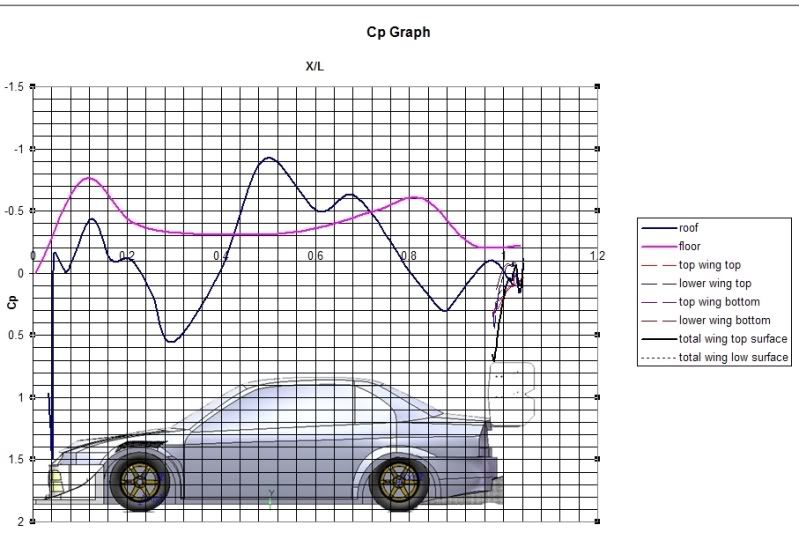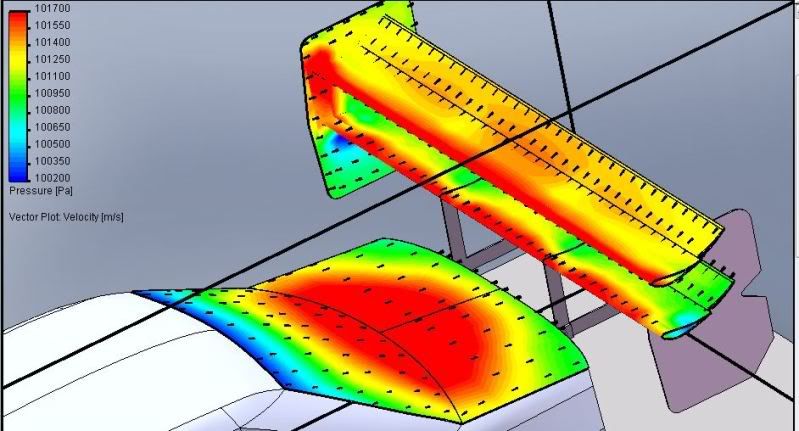Shelly i joke in most of my posts.
No i was asking for a reference from you.
- Login or Register
No account yet? Sign up

It wont give you a better idea, and you're going to have to pay for that, becuase you are asking for something in 3d which is not the case for most Cop plots.PNSD wrote:Im with Shelly regarding cp's. Just calculate the cp's and that should give a better idea.



What plots?malcolm wrote:What you seem to be missing is that Shelly and I believe that the diffuser should affect what happens at the sides of the floor, whereas you seem to disagree; however, the evidence you supply seems to be showing results that are not seen on other plots.
You can't forget the front splitter.Take the Honda one you showed: forgetting the front splitter, you can see that a streamline makes it all the way out to the edge of the floor, and then gets pulled back into the diffuser. Yours does not show that at all, and the diffuser seems to have much less of an effect.
The plot that you are showing hides some of the data. I agree with you that changing the scale does not change the calculation (obviously), but it SHOWS more of what that calculation just solved.
Oh boy.Right now you are just showing a narrow slice of that calculation, and the area around the mouth of the diffuser is just a big blob of blue, since you cut off the colour plot higher than the minimum pressure generated by the diffuser mouth.

Yes, exactly, so you are agreeing with my MS paint then?1) In the Honda case, air goes out to the edge of the floor, and then gets pulled back in.
Nope. It diverges even more. Look up the ejector principle.2) If hot exhaust creates a greater suction peak at the leading edge of the floor of the Renault, those streamlines that would diverge to the edge of the floor on a Honda will be pulled laterally inward as they transition under the floor of the Renault. Now the air that entered from the front doesn't diverge as much.
Nope Nope.Given 1 & 2, since the diffusers of each car would be relatively similar in effectiveness, and since the air that entered from the front doesn't diverge as much, it stands to reason that some air from outside the floor would then get pulled in toward the diffuser.
Exactly.So in conclusion, the diffuser itself doesn't suck in the exhaust.
Tell you what i will revisit the model and do the CP plot for the mid plane.What I think happens is that it is the combination of the cross-flow air, the suction-peak of the floor's leading edge, the slightly-lower-than-ambient pressure zone under the whole floor, and the suction-peak at the diffuser mouth all work together to pull at least some of the exhaust ultimately into the diffuser, despite the 90~100 degree angle of the exit.
How fast is that engine revving?malcolm wrote:
http://www.youtube.com/watch?v=apiB8ia8wos
I don't know the angles of the exhaust exits, and some energy would be removed from the turbos, but given that it exits into a free stream rather than toward a suction peak, and that the speed of the car isn't overly high, maybe that offsets it enough to bring it back into the ballpark?